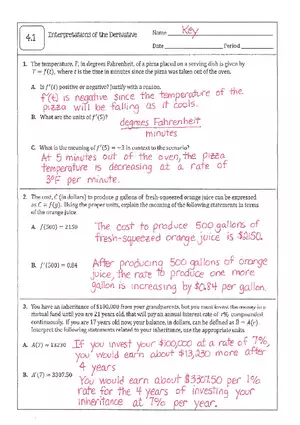Study Guide
Extra Practice Trigonometry
-
University:
Whitman College -
Course:
MATH-125 | Calculus I Academic year:
2020
-
Views:
423
Pages:
1
Author:
Keenan Fowler
Related Documents
- 4 Double Integrals - Solutions
- Calculus II Review Solutions Chapter 11
- The Lanczos Derivative
- Quick Sheet Horizontal Asymptotes
- Miscellaneous problems for Math 126
- Final Review for Calculus II
- Review Packet for Exam #3
- Calculus III Quiz the First - Answer Key
- Calculus Solutions for Special Assignment 8
- Math 12 Final Exam 2010 Answer Key
- Complex Solutions to Real Solutions and a Computation
- Multivariable Calculus Midterm I Solutions
- 2 Functions of Several Variables - Solutions
- Calculus Instructions
- Answer Key-Math 11- Optional Review Homework For Exam 2
- How to Create a Bibliography in LaTeX
- Math 13 Spring 2010 Exam 1 February 23, 2010
- nth Term Divergence Test (nTDT)
- Examples for how to plot a vector field in Maple.
Extra Practice Trigonometry

Recommended Documents
Report
Tell us what’s wrong with it:
Thanks, got it!
We will moderate it soon!
Report
Tell us what’s wrong with it:
Free up your schedule!
Our EduBirdie Experts Are Here for You 24/7! Just fill out a form and let us know how we can assist you.
Take 5 seconds to unlock
Enter your email below and get instant access to your document
